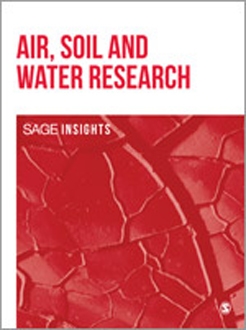Zero-valent metals proved high reactivity to adsorb and degrade various contaminants removal. The chemically prepared nZVAl was characterized using UV-Vis spectrum, X-ray diffraction (XRD), and scanning electron microscope (SEM). This investigation explores the adsorption effect of nZVAl powder toward soluble organic compounds exemplified by chemical oxygen demand (COD) standard solution. The effect of different operating parameters was studied to identify the best removal conditions. All variable and covariable data were introduced to build statistical models. The effect of the operating parameter was studied at different pH (3-10), nZVAl dosages (0.1-0.8 g), at different times (5-120 minutes), stirring rate (50-400 RPM), and initial COD concentration (100-800 mg/L). The obtained results displayed that nZVAl is effective in the removal of standard COD solutions, where the removal percentages were 56% and 96% for 800 ± 18.0 and 100 ± 11.8 mg/L COD, respectively, at 10 minutes after using nZVAl dry dosage 0.6 g/L, pH 8, and rate 100 rpm. Also, the effect of nZVAl on other wastewater contaminants removal was studied and compared with Egyptian law for draining wastewater into nonfresh water (drainage-lakes-ponds) No. 48 of 1982 limits. The results of adsorption isotherm and kinetic model of COD fitted well to Freundlich isotherm and pseudo second order, respectively. Nonlinear artificial intelligence neural network (ANN) importance data agree with linear response surface methodologies (RSM) in simulating the adsorption of COD onto nZVAl indicating that the most significant coverable is adsorbent dose. Finally, this study appropriates using nZVAl in highly contaminated wastewater rather than other chemical and biological processes.
How to translate text using browser tools
1 January 2020
Nano Zero-Valent Aluminum (nZVAl) Preparation, Characterization, and Application for the Removal of Soluble Organic Matter with Artificial Intelligence, Isotherm Study, and Kinetic Analysis
Ahmed S Mahmoud,
Rabie S Farag,
Maha M Elshfai,
Lameas A Mohamed,
Safaa M Ragheb

Air, Soil and Water Research
Vol. 12 • No. 1
January 2019
Vol. 12 • No. 1
January 2019
artificial neural networks
Chemical Oxygen Demand removal
isotherm studies
kinetic studies
nZVAl
regression analysis





